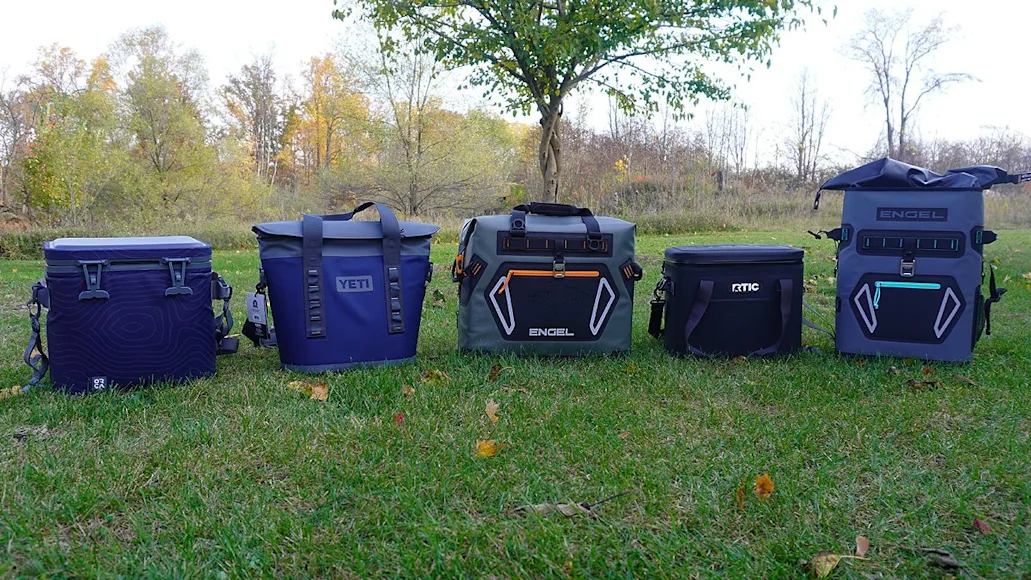_We may earn revenue from the products available on this page and participate in affiliate programs. Learn more ›
_
Best Overall
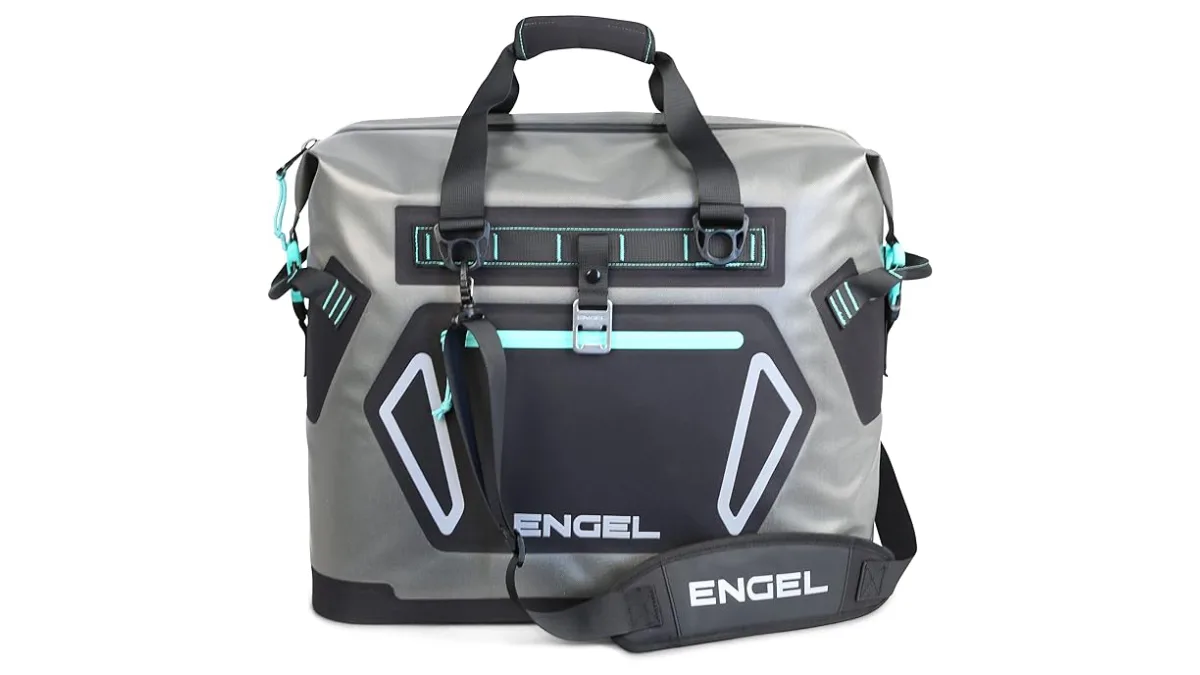
Engel HD30 Heavy Duty Cooler Bag
Best Insulated
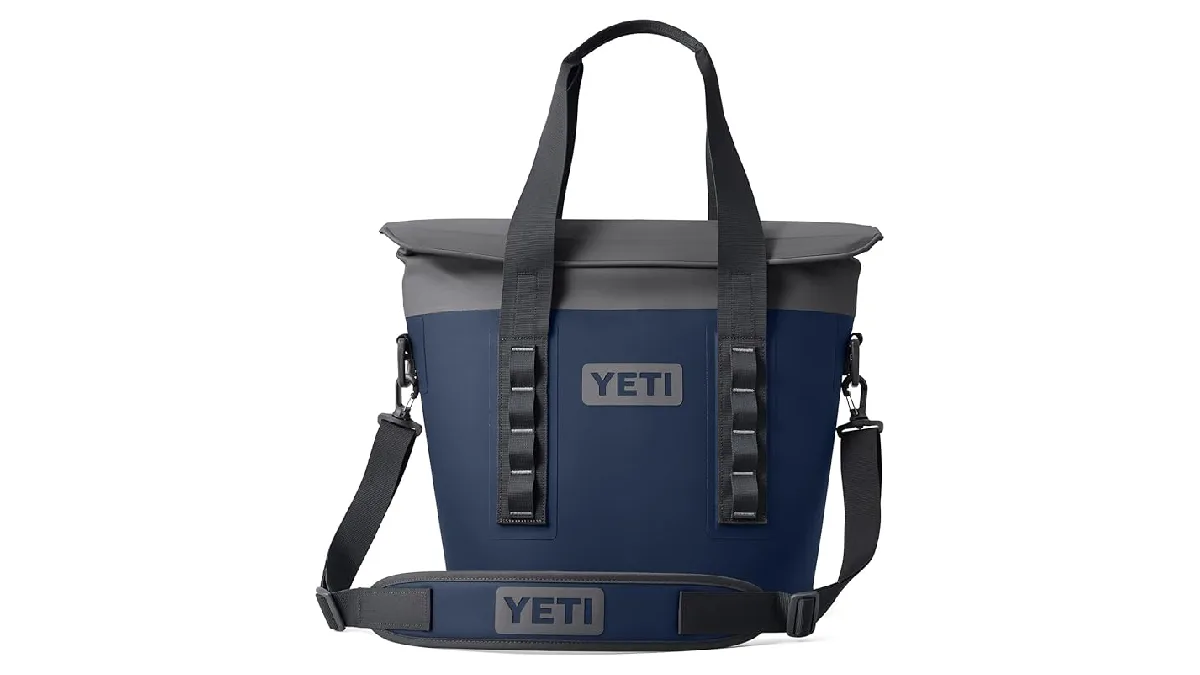
Yeti Hopper M15
Best Bag
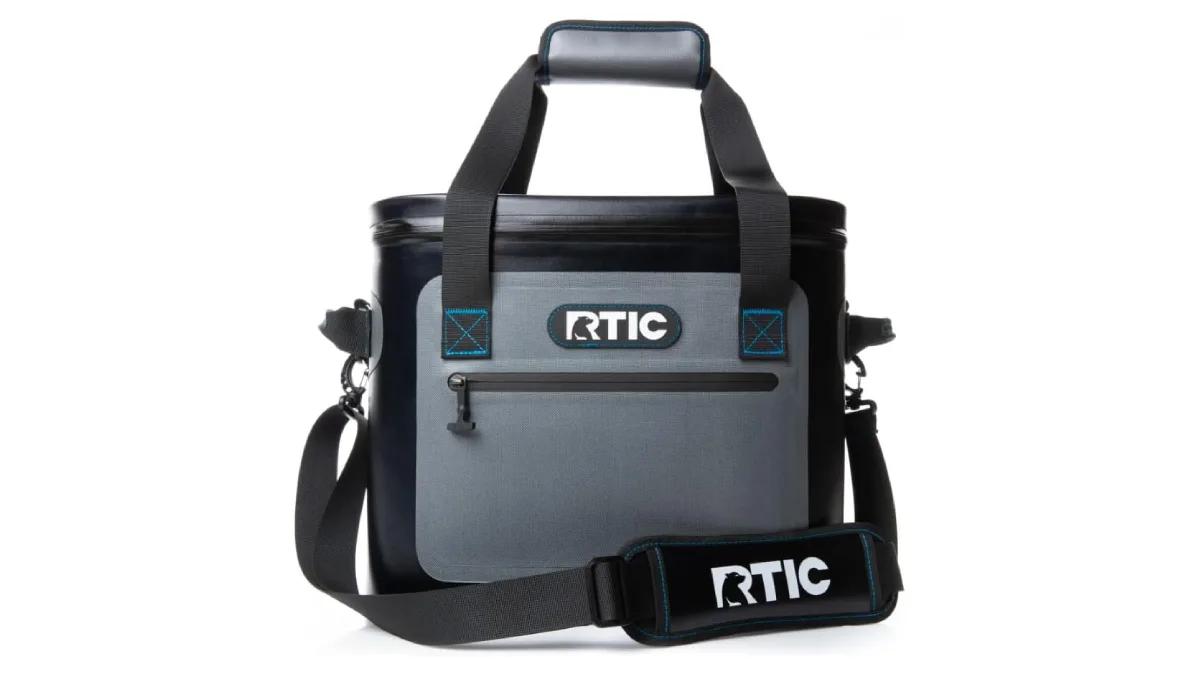
RTIC Soft Pack
A quality soft cooler offers an excellent alternative to a traditional hard cooler
. They are perfect for day hikes, overnight camping, fishing trips, and more. Plus, they’re easy to carry, and some have a surprising amount of storage and impressive ice retention. But continuous improvements to modern cooler designs make choosing a specific model difficult. They now come in various designs, sizes, and purposes. So which ones are the best?
We identified the top brands—like Yeti, RTIC, and Orca—and asked them to send us their favorite soft coolers. Then we gave them a thorough ice retention and durability test to find the best of the best. We broke the winners down into specific categories to make your decision a little easier, whether you’re looking for a small bag for day trips or a large backpack for multi-day excursions. Here are the best soft coolers we’ve tried out.
The Best Soft Coolers
Best Overall: Engel HD 30 Heavy Duty Cooler Bag
Best Bag: RTIC Soft Pack
Best Insulated: Yeti Hopper M15
Best Small: Orca Wanderer 24
Best Backpack: Engel Roll Top High Performance Backpack Cooler
Best Overall: Engel HD30 Heavy Duty Cooler Bag
Best Overall

Specs
Size: 22 or 32 quarts
Insulation: Closed Foam
Dimensions: 17.5” x 9.5” x 15” (HD20)
Weight: 3.5 pounds
Pros
Incredible ice retention
Solid price point
Lots of extra storage
Cons
Difficult to empty and dry
In terms of ice retention, the Engel HD30 was the standout of the test. The closed cell foam insulation kept ice for four whole days. There were still a few cubes floating on day five of the test, a full 24 hours after the other coolers had completely melted off. This puts the Engel close in performance to a hard-sided rotomolded cooler.
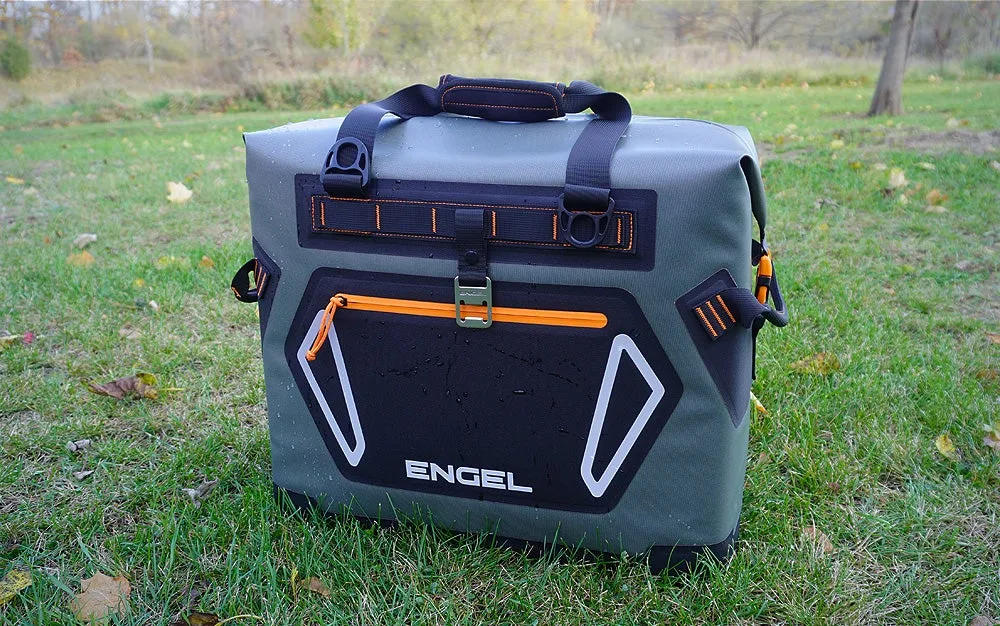
The Engel soft sided cooler bag during testing. (Photo/Travis Smola) Travis Smola
The only downside I found was that it’s a bit hard to open and dry out after you’re done using it. Expect to wipe down the interior thoroughly after each use. Other than some dirt that wiped away easily, the HD30 handled all the abuse I threw at it. This is a great choice for families, group outings, or car camping trips. Plus, it’s relatively affordable when compared to other similar-sized coolers on the market.
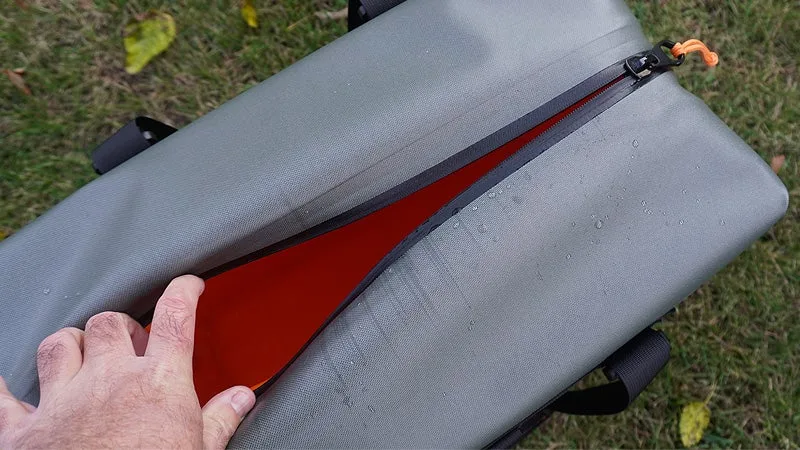
The HD30 has an exceptional zipper for sealing in the cold. (Photo/Travis Smola)
Best Bag: RTIC Soft Pack
Best Bag

Specs
Size: 12, 20, 30, or 40 cans
Insulation: Closed foam
Dimensions: 15.5” x 12” x 11.5”
Weight: 4 pounds
Pros
Sharp looks
Easy cleaning and access
Great strap and handles
Cons
Sweated more than the other coolers
Sharp and stylish, RTIC’s Soft Pack is the perfect cooler for a day on the water. It held ice for just under three days, meaning it will handle a full day of fishing
or boating with ease. Even better, it floats. So you don’t have to worry about dropping it overboard.
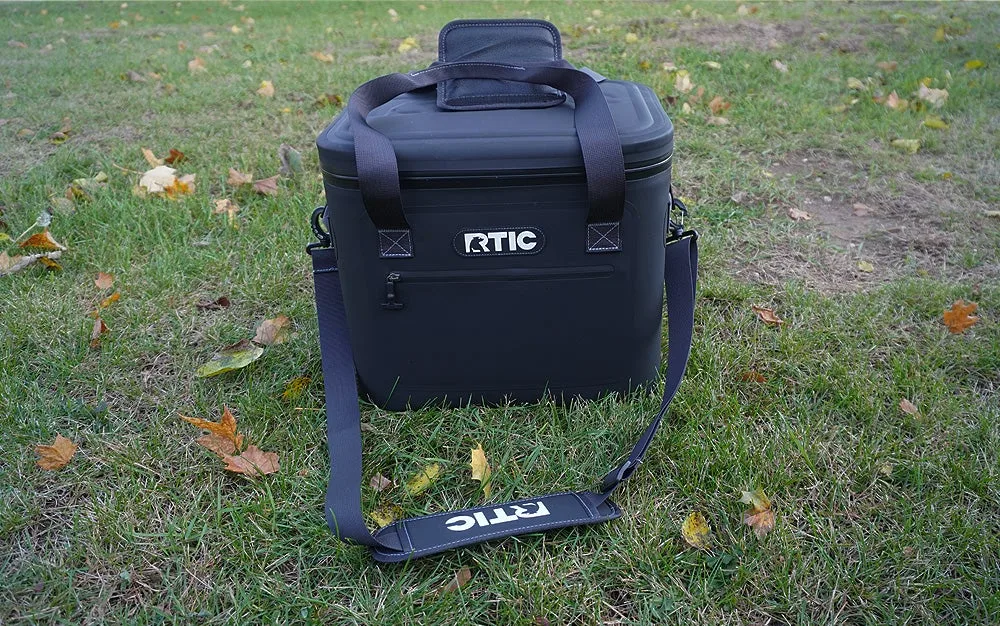
The RTIC Soft Pack during testing. (Photo/Travis Smola) Travis Smola
There was some noticeable condensation on the outside of the cooler, but nothing that a quick wipe from a towel can’t solve. The zipper needed to be lubricated a bit out of the box, so don’t be alarmed if you struggle to open/close it at first. This RTIC soft cooler can be had for just over a C-note, but is often on sale for less.
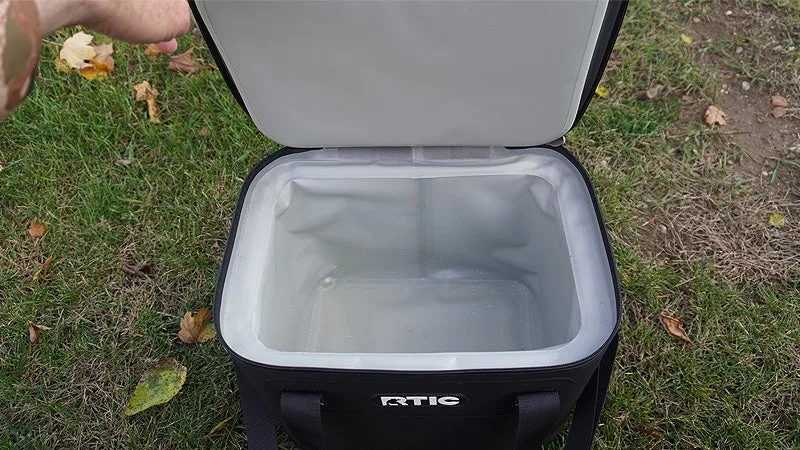
The RTIC has a great interior that’s easy to clean. (Photo/Travis Smola)
Best Insulated: Yeti Hopper M15
Best Insulated

Pros
Great looks
Magnetic close is crisp and solid
Good ice retention
Cons
Expensive
Yeti makes a few different variations on their M series soft cooler, which is a convenient tote style. I tested the M15 and found it quite capable of holding ice for over three and a half days. That’s largely thanks to the excellent magnetic seal. It clamps shut with authority and doesn’t let in any extra air. Additionally, the top can be rolled down and secured tight with some additional straps for an even better seal.
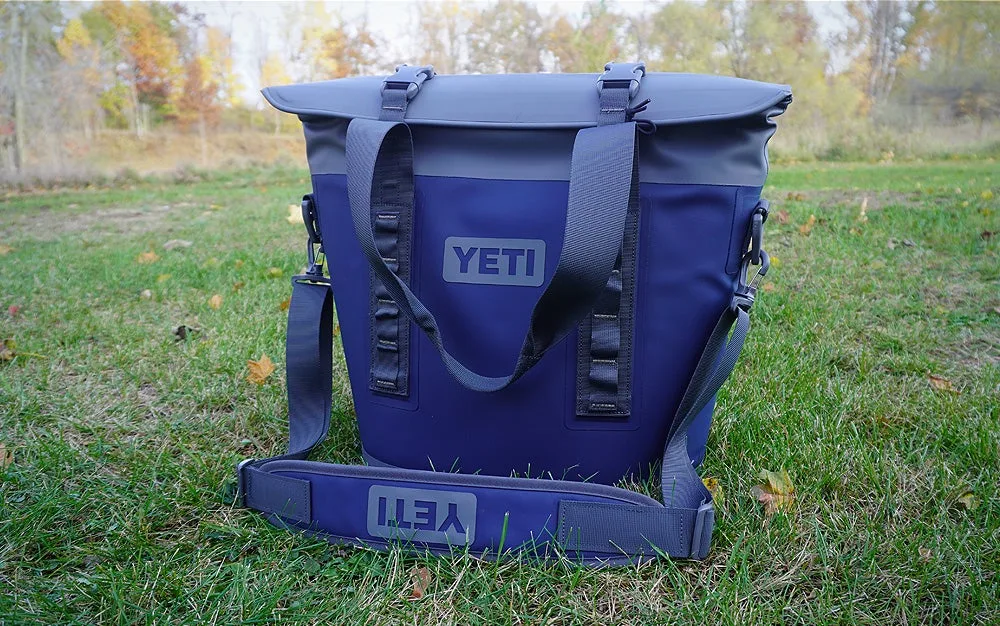
The Yeti Hopper M15 tote soft cooler during testing. (Photo/Travis Smola) Travis Smola
The excellent ice retention and non-slip bottom make it a good choice for road trips. This cooler is super easy to carry, thanks to an excellent shoulder strap. I also dig the looks of the M15, which can be had in charcoal or navy. The only downside is the expensive price tag, but if you can swing it, you won’t be disappointed.

The interior of the M15 seals off nicely thanks to a magnetic closure system. (Photo/Travis Smola) Travis Smola
Best Small: Orca Wanderer 24
Best Small
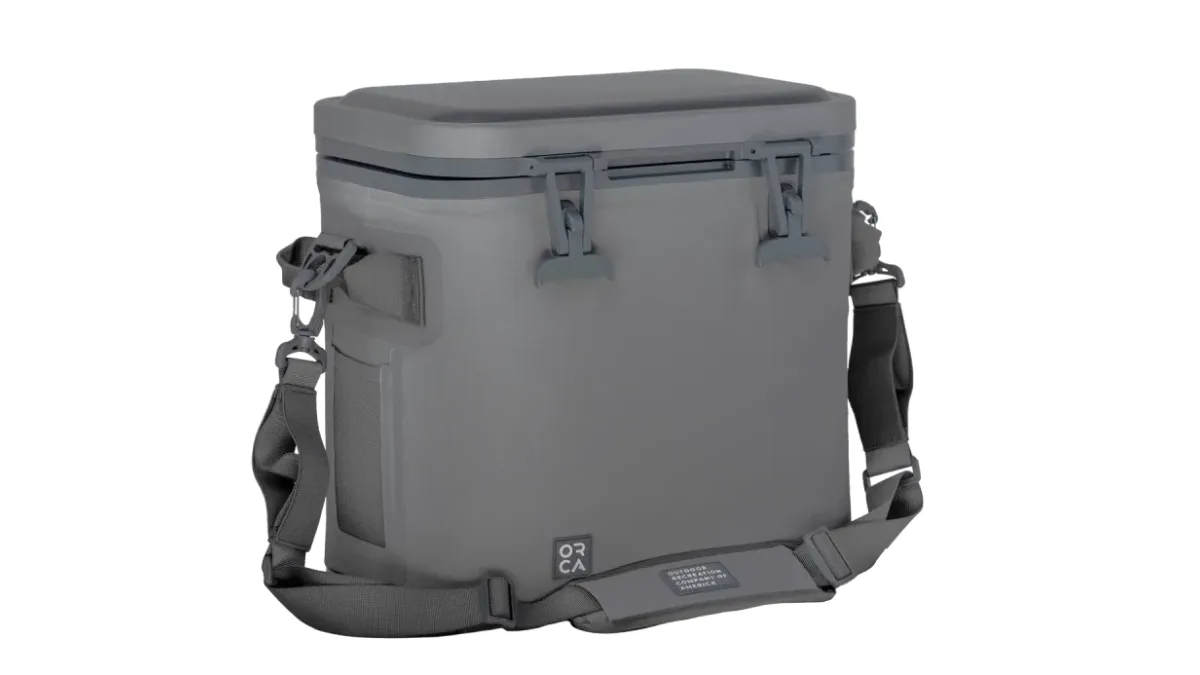
Specs
Size: 24 cans
Insulation: N/A
Dimensions: 15” x 15.25” x 10.5”
Weight: 6.75 pounds
Pros
Latches are easier than zippers or magnets
Solid ice retention qualities
Easy access and cleaning
Cons
Feels a hair expensive
The Orca feels like a hybrid of a bag and a soft-sided cooler. It features a plastic frame and hard latches instead of a zipper or magnet closure system. The lid seals better than I expected, holding ice for just under three days. I was worried about how this cooler would handle the durability tests—it did pop open a couple of times when dropped— but the latches and frame held up well despite a fall from nearly 9 feet.
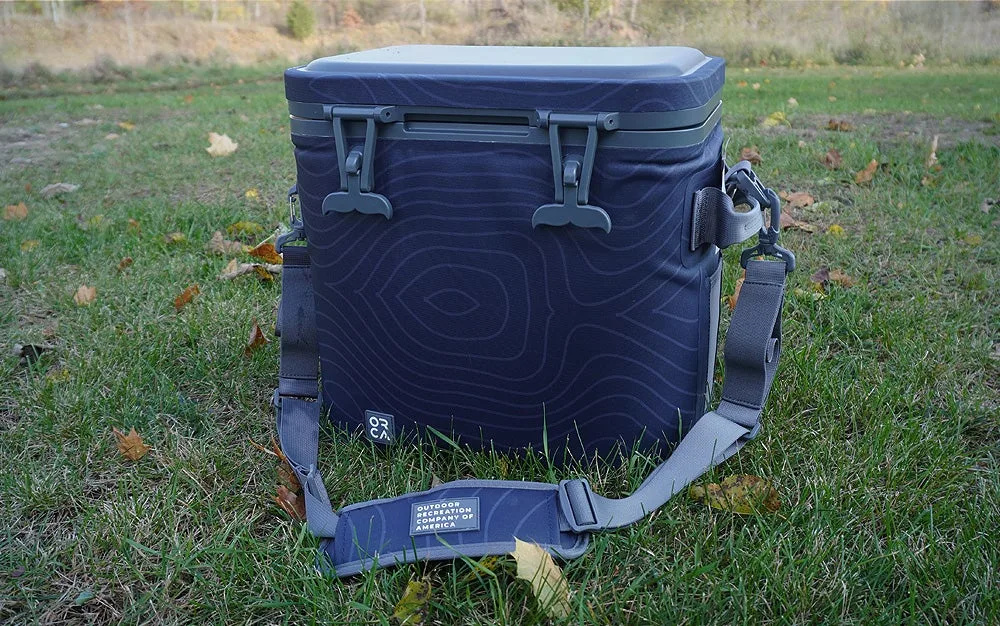
The Orca Wanderer cooler during testing. (Photo/Travis Smola) Travis Smola
The open design of this cooler makes for an easy clean-up. It dries out quickly too, and the 24-can size is perfect for carrying with a padded shoulder strap. The price point feels a little high for a cooler of this size, but I can’t argue with the exceptional performance and nice looks. While it’s our top pick for the beach, it’s quite versatile for boating and road trips.
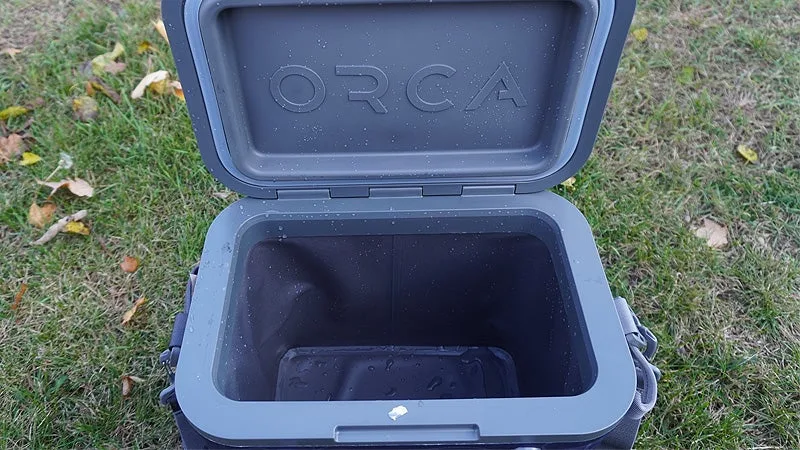
The Orca has easy access to the interior, which makes it simple to clean and air out. (Photo/Travis Smola) Travis Smola
Best Backpack: Engel Roll Top High Performance Backpack Cooler
Best Backpack
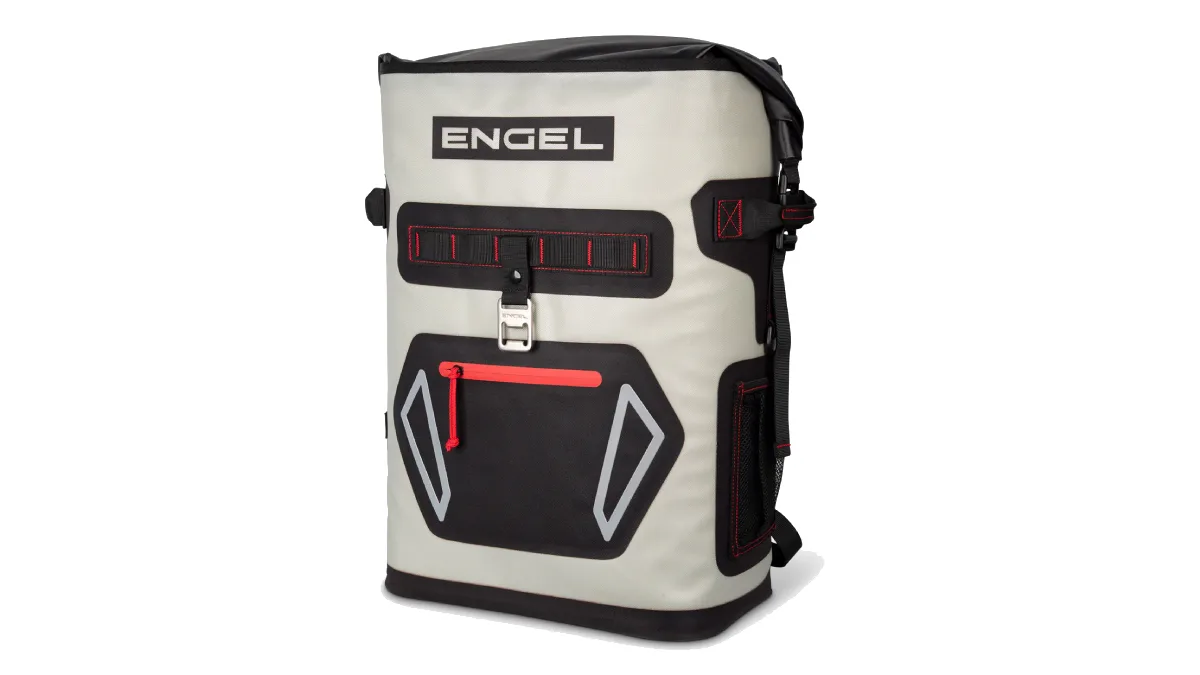
Specs
Size: 25 quarts
Insulation: Closed cell foam
Dimensions: 14” x 9” x 20”
Weight: 3.5 pounds
Pros
Tons of space
Comfortable shoulder straps
Affordable price point
Cons
Hard to dry and air out
The most striking thing about the Engel roll top is the massive capacity with a lightweight design. This cooler comes in at only 3.5 pounds and feels incredibly comfortable on the back, even when weighed down with ice. This cooler also held ice for about three days, even though I didn’t have the roll top tightened down. I suspect the retention time can be improved with it cinched shut. It can probably be extended even further if the built-in vacuum seal is utilized.
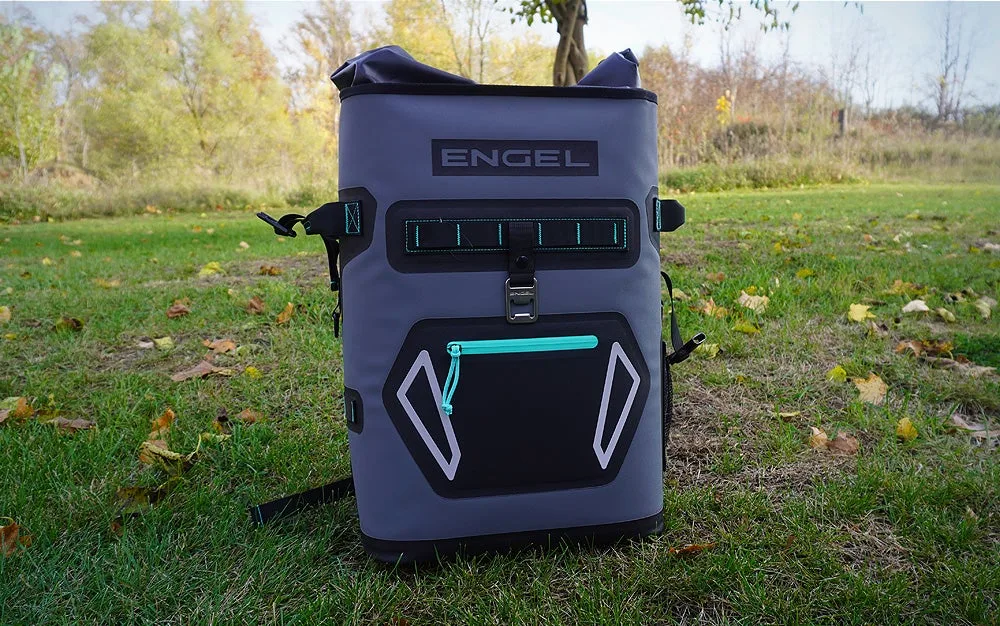
The Engel backpack cooler during testing. (Photo/Travis Smola) Travis Smola
Much like the Engel HD30, this is a hard cooler to dry and air out. I had to wipe the interior with paper towels to get much of the moisture out. Although this cooler is easier to prop open than the HD30. It is also surprisingly affordable compared to similar-sized backpack-style coolers.
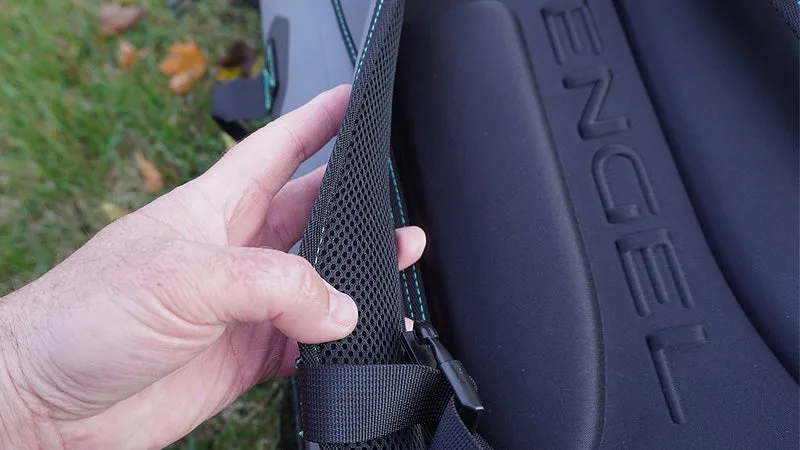
The padding on the back and straps make for a comfortable carry, even when fully loaded. (Photo/Travis Smola) Travis Smola
How We Tested Soft Coolers
We followed a similar evaluation process to our rotomolded cooler test
that we conducted earlier this year. First, we tested ice retention. I filled each of the coolers to the top and then observed how long for the ice to melt. Because my testing was done in the fall, I kept the coolers indoors at a room temperature of about 70 degrees for five days.
I checked the coolers a few times each day to simulate normal use. Additionally, I made sure each cooler was open and exposed to air for an equal amount of time when monitoring ice levels. I didn’t empty the water until the ice was completely melted. Each cooler was checked for leaks around the seams and zipper areas during the ice retention test.
I also took the time to drop each of these coolers off the top of a ladder dozens of times to test their durability. Then I inspected each cooler for dents, dings, and rips. When deciding the best coolers for each award category, I also considered the following factors:
Aesthetics: Does the cooler look good? Are there multiple color schemes available?
Value: How does the price point compare to the materials and build?
Storability: How easy is it to store this cooler? Does it flatten down to store in tight areas?
Buying Guide
Soft coolers are usually made for shorter adventures. So don’t expect the ice to last a week. The insulation simply isn’t as thick, and the soft side walls don’t retain the cold as well. Depending on the ambient temperature outside, you could get two to three days of ice retention.
While their ice retention capabilities are not as good as a hard cooler, soft coolers have a significant weight advantage. Many manufacturers now offer specialized backpack coolers
that are modeled in a soft style. This makes them extremely easy to carry.
Pro tip: Buy reusable freezer packs for your soft cooler. Mostly because sloshing water is annoying in a soft cooler, especially a backpack model. Freezer packs keep everything neat and tidy while also keeping everything cold.
FAQs
Q: Is a soft cooler as good as a hard cooler?
Hard coolers have a distinct advantage over soft ones as far as ice retention. That’s just because hard coolers can utilize thicker insulation that retains the cold better. However, soft coolers have a distinct weight and storage advantage over hard shell versions.
Q: What size cooler do I need?
It depends on what you’re doing. A cooler the size of the Orca Wanderer or a 12-can RTIC soft pack is fine for a couple’s day at the beach. While something like the Engel HD30 is better for large families or gatherings with multiple friends. Check the dimensions before you buy.
Q: Can you put ice in a backpack cooler?
Absolutely. I filled the Engel backpack in this test all the way to the top. Although this style of cooler is rather difficult to air out and dry. It’s not a bad idea to invest in some reusable freezable ice packs. It cuts down on the mess with a larger cooler and saves money that would otherwise be spent buying large bags of ice.
Why Trust Us
For more than 125 years, Field & Stream has been providing readers with honest and authentic coverage of outdoor gear. Our writers and editors eat, sleep, and breathe the outdoors, and that passion comes through in our product reviews. You can count on F&S to keep you up to date on the best new gear. And when we write about a product—whether it’s a bass lure or a backpack—we cover the good and the bad, so you know exactly what to expect before you decide to make a purchase.

